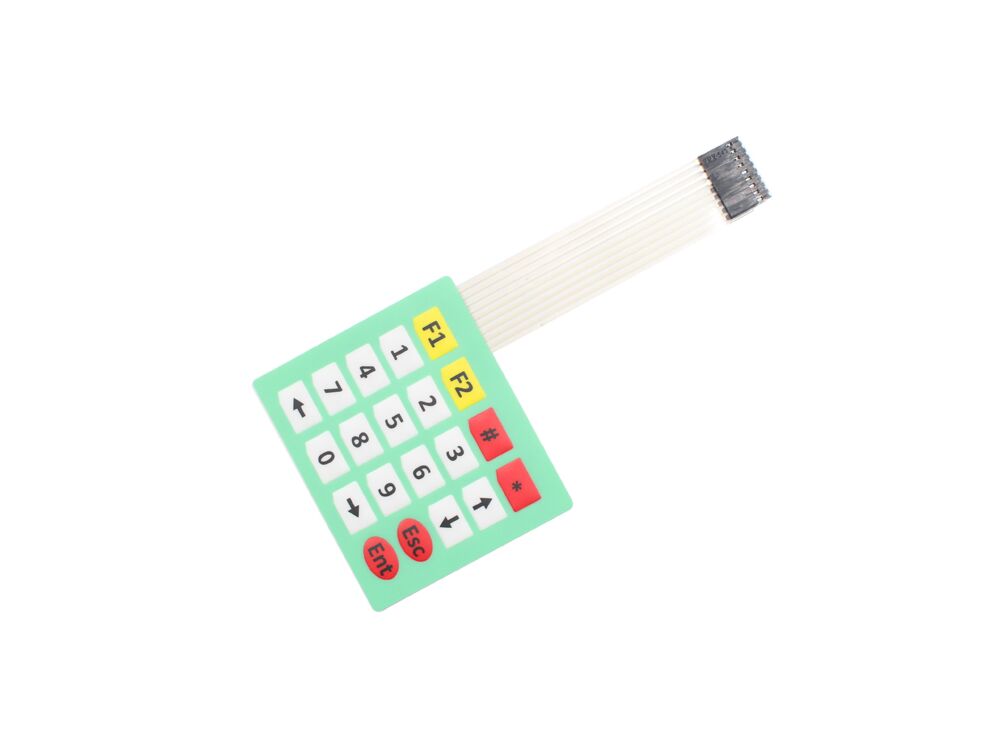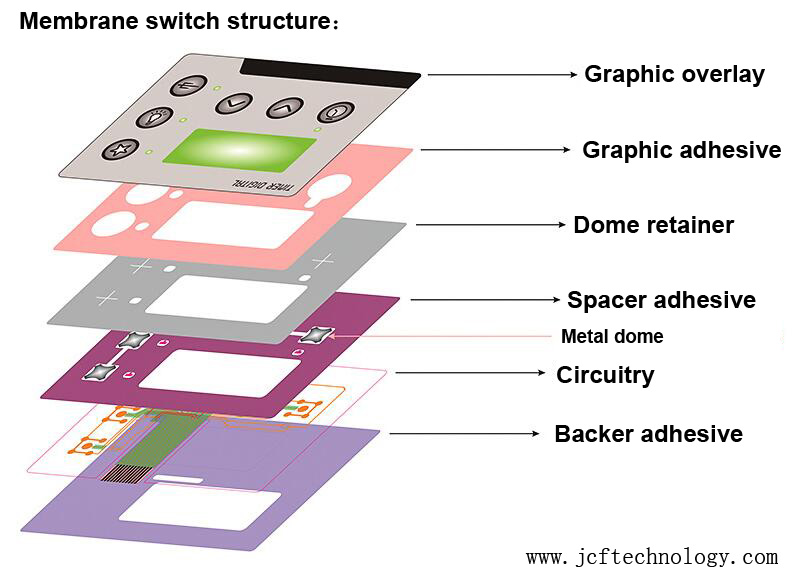Membrane Switch: Reliable, Cost-Effective, and User-Friendly Control Systems
Membrane Switch: Reliable, Cost-Effective, and User-Friendly Control Systems
Blog Article
Recognizing Membrane Layer Switches Over: The Secret to Resilient and Trusted Controls

What Are Membrane Switches?
Membrane layer buttons are an innovative solution in the world of interface technology, incorporating performance and design flawlessly. These devices serve as an interface in between users and digital systems, integrating several parts right into a compact style. Generally constructed from versatile, thin layers of products, membrane buttons are made to reply to touch, making it possible for users to interact with equipment and electronic tools successfully.
The main components of a membrane button include a published circuit layer, visuals overlay, and a spacer layer that avoids unexpected activation. The visuals overlay can be customized to show brand name identification or user choices, improving aesthetics while ensuring usability. Membrane layer switches are generally used in various applications, consisting of clinical gadgets, consumer electronic devices, and industrial tools, owing to their sturdiness and resistance to environmental aspects such as wetness and dirt.
Among the crucial benefits of membrane switches is their capability to hold up against damage, making them excellent for high-traffic settings. Furthermore, they are light-weight and call for marginal area, enabling cutting-edge designs in item growth. In general, membrane changes represent a efficient and sensible choice for modern-day electronic interfaces, marrying technology with user-centric style principles.
How Membrane Changes Job
The procedure of membrane changes rest on an easy yet efficient device that equates individual input into digital signals. These buttons contain several layers, usually consisting of a visuals overlay, a spacer layer, and a circuit layer. When a customer presses the switch, the leading layer warps, permitting a conductive component in the circuit layer to make contact with a corresponding conductive pad on the bottom of the graphic overlay. This get in touch with shuts the circuit and sends a digital signal to the tool, showing that the button has actually been turned on.
The design of membrane layer buttons can differ, yet they frequently incorporate domes or responsive components to supply responses to the user, boosting the overall experience - membrane switch. The products used in membrane buttons, such as polyester or polycarbonate, add to their toughness and resistance to environmental elements, including moisture and dust. The printed circuits are usually encapsulated, which protects them from wear and tear over time.
Advantages of Membrane Buttons

In addition, membrane layer switches are recognized for their durability. Created from durable materials, they are immune to dust, click to read moisture, and physical wear, which significantly expands their lifespan contrasted to typical mechanical buttons. This durability makes them specifically suitable for high-traffic atmospheres and applications requiring long life.
An additional significant advantage is the ease of cleansing and upkeep. The smooth surface of membrane layer changes minimizes dust buildup and is commonly unsusceptible spills, making them optimal for settings that require regular sanitization.
Additionally, membrane layer buttons supply a structured account, causing a thinner design that can be integrated right into various gadgets without adding mass. This feature not just improves the visual appeal yet also adds to a more ergonomic product style.
Applications of Membrane Buttons
Easy to use and flexible, membrane buttons find applications throughout a wide variety of markets, consisting of medical gadgets, customer electronic devices, and commercial devices. In the clinical field, these buttons are integral to devices such as diagnostic equipment, client surveillance systems, and mixture pumps, where reliability and convenience of cleaning are important. Their ability to keep and withstand harsh atmospheres capability makes them suitable for such applications.

In customer electronics, membrane switches are made use of in items like microwaves, washing machines, and remote controls - membrane switch. Their smooth design permits for user-friendly interface, boosting the total individual experience while giving toughness and resistance to deterioration
Commercial equipment additionally benefits from membrane layer buttons, especially in control panels for machinery and automation systems. These buttons provide security versus dust and dampness, making certain constant efficiency in difficult atmospheres. Their personalized functions allow producers to tailor them to certain operational needs, enhancing efficiency and performance.
Picking the Right Membrane Switch Over
When selecting a membrane button, it is necessary to take into consideration different aspects that influence efficiency and viability for certain applications. The key factors to consider include ecological problems, responsive responses, longevity, and design specifications.
First, analyze the operating setting; switches revealed to moisture, chemicals, or severe temperature levels call for particular products to ensure durability and functionality. Next, examine the need for responsive comments. Depending on individual communication, some applications might gain from a tactile reaction to confirm activation, while others might like a non-tactile layout for visual reasons.
Resilience is an additional crucial aspect; membrane layer switches ought to be developed to endure frequent usage, impacts, and abrasion. Make certain the chosen button can sustain the anticipated lifecycle, especially why not try these out in high-usage circumstances.

Final Thought
Finally, membrane switches offer as important components in the layout of trusted and sturdy control systems across different industries. Their small layout, combined with robust building and personalized attributes, enhances customer interaction while guaranteeing durability popular environments. The adaptability of membrane layer changes enables for tailored solutions that fulfill particular functional click to investigate needs, strengthening their importance in modern-day innovation. As sectors remain to develop, the value of incorporating reliable membrane button options can not be overemphasized.
Membrane switches over represent an essential facet of contemporary user interface layout, mixing performance with strength in various applications.Membrane layer buttons are an advanced solution in the world of user interface modern technology, combining capability and design seamlessly. Normally constructed from versatile, slim layers of materials, membrane layer switches are created to react to touch, making it possible for users to communicate with machinery and digital gadgets successfully.
The style of membrane layer switches can vary, but they often include domes or responsive components to offer feedback to the user, improving the overall experience.In verdict, membrane layer switches over serve as important components in the layout of sturdy and reliable control systems throughout numerous sectors.
Report this page